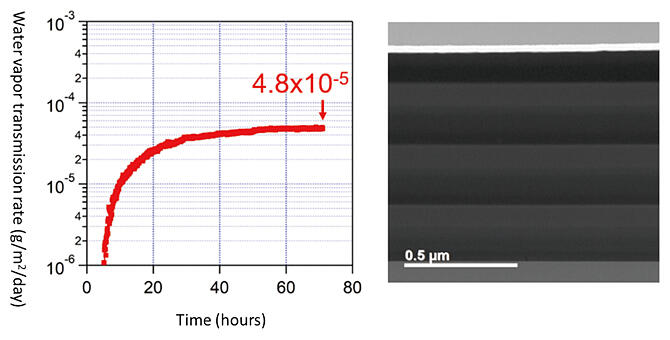Barrier technologies play a critical role in various applications by preventing the intrusion of gases, like oxygen and water vapor, such as in potato chip packaging and solar cells. However, conventional vacuum deposition methods used to achieve high barrier performance have low productivity, are costly, and generate large amounts of carbon dioxide.
Professor Yoshiyuki Suzuri and his colleagues at Yamagata University's Innovation Center for Organic Electronics have been developing a less expensive alternative barrier with equivalent performance using printing and coating processes. In their study, they succeeded in fabricating a dense inorganic film in just two minutes at room temperature. The dissolvable polysilazane with Si‐N backbone was densified by irradiation of vacuum‐ultraviolet light with a wavelength of 172 nanometers (one billionth of a meter). This solution‐processed barrier resulted in a water vapor transmission rate of only 4.8 × 10−5 grams per square meter per day, demonstrating glass‐like performance and breaking the previous record by more than one order of magnitude. It marks the world's highest performance for a printed water vapor barrier. The film's optical transparency and flexibility make it versatile for use in various applications.
As Society 5.0 advances, IoT device numbers will soar, driving demand for barrier technologies to protect them. The research team is also using inkjet technology to develop barrier films that can be printed on specific areas. This project aimed to enhance the performance of water vapor barriers, but the approach could potentially be applied to oxygen barrier performance too. In the long run, the team plans to extend the technology's application beyond devices to include food packaging, medical supplies, and other products.





